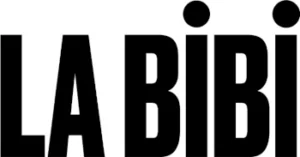The word text, from the Latin textus, means ‘fabric’. Each sign that makes up a text acquires meaning thanks to the set or sequence of characters that form a thread of ideas that, at the same time, generate a weave. In this way, text (or narration) and weaving are strongly related: a text is a quantity of statements threaded together and ordered on the basis of an argument.
For many civilizations, the art of weaving has been related to mythology and the feminine universe, in the same way that the word has been a space reserved eminently for men. Thus, many women have remained faithful to the etymological origin of the term in order to exercise their rights from otherness. Since ancient Greece, the collective imagination has been built on fables featuring women dedicated to the performance of these functions: Arachne, Philomela , Penelope, Procne or the Moiras, among others, write their own discourse from the loom. Their tapestries, the embryo of all the rest, are applauded with demure fear, even if, on occasions, they manage to cross the interior space of the domus. This was the case of Arachne and her supposed insolence when it came to challenging Athena and expressing her own point of view through her weaving/narrative, for which reason she was condemned to weave eternally from invisibility and turned into a spider.
Hierarchic al and patriarchal relations of social organization have historic ally been shaped by a s eries of norms, many of them bas ed on the restriction and marginalisation of women’s production. From the Greek canon, the rules or precepts that govern hegemonic discourse determine the validity of texts and, therefore, the notion of culture and the acceptance of certain artistic practices, such as textile work . In this s ens e, questioning the dominant artistic and social canon through a technique traditionally associated with femininity, the domestic and the artisanal acquires a critic al and subversive meaning. Despite the contradictions implicit in these process es, the creative voice of Ela Fidalgo (Palma , 1993) constitutes an approach that, grounded in the pers onal and in an absolutely intuitive way, is built on approaches of situated thought to deconstruct the historical-artistic canon and rewrite it through her work.
From Polyclitus, Vitruvius, Dürer and Da Vinci spending time determining the perfect proportions of the human body to photography, film, television and social media, the canon of beauty has evolved over the centuries. Aesthetic discrimination is a fact that, at this point in time, does not catch us unawares, but is still difficult to deal with. Like it or not, women have always been more subject to the changes and demands of the aesthetic canon: flappers, the “Gibson girl”, the Twiggy model or the Kardashian effect are just a few examples. Artistic expressions become fundamental elements when it comes to creating spaces for reflection and criticism, capable of counteracting the social and cultural patterns imposed by each historical and political context. This is how Ela Fidalgo understands art, as a meeting place and a tool for transformation that allows human beings to listen and question in order to grow.
Our contemporary society, plagued by narcissism and confusion, needs to reconcile itself with the essence of the human and reconstruct its identity. Who are we? What defines us? How do our body and mind relate to each other? How do we project ourselves through the body? A myriad of questions that Ela Fidalgo delves into through the creative process of her works, in which she exposes herself out of necessity and openly invites the observer to participate: “Letting go of my work so that others can mutate”, she describes. A gesture of generosity that brings us back to consciousness and restores meaning to our reality: “The real essence of the soul is identified with its actuality. Actuality is the necessary requirement. The human soul is not a power, it is an act”.
Experimentation and error are part of the human condition. So are fear, pain and trauma. It is not easy to step forward and dare to deactivate Instagram filters. Then, to strip away other “protective” filters of the most everyday things that help us feel less vulnerable in front of our peers. Fidalgo shares her most intimate self, risking being judged, and invites us to accept the wound, to avoid “happycracy”, an invention at the service of the neoliberal cultural revolution, and to value human nature in community.
The lack of female referents in art historiography has prompted contemporary women artists to carry out a conscious revision and analysis of the past, to reconstruct and rewrite their own history in order to arrive at a personal language capable of producing texts with their own voice. Ela Fidalgo’s work (im)perfectly integrates these ideas in the most natural way and without restrictive labels. Since she developed her plastic impulse, her pieces have been the object of needlework and have rarely avoided the textile DNA. In his canvases and sculptures, the naked human body is shown as the container of all this heritage that conditions us so much; as something inexact and mutable. The figures, worked from the union of pieces of different translucent fabrics that reveal the wounds, seem to merge and share scars. The apparently isolated are connected through their threads, as in a spider’s web, reconstructing the fragments of a humanity in constant transformation.
The bodies without artifice in the series De ente et essentia*, reduced to the tracing on their reverse side, flee from the flat surface to become a subject of their own in La gordita, a large, unicoloured collective sculpture that challenges us to question our own identity. Thinking the feminine (and human) outside the dominant regimes of visuality and from its ephemeral and irregular condition is a way of approaching what is truly authentic, hidden under those remnants that are the accumulation of experiences and people that have defined us as individuals.
Fidalgo’s expressive capacity goes beyond any technique or concept. Her work is a true extension of herself: of her beliefs, experiences and aspirations. Each piece is also an ode to the use of textiles as an artistic discipline and as an expressive channel through which to communicate, dialogue and question, even if it means becoming a spider.







